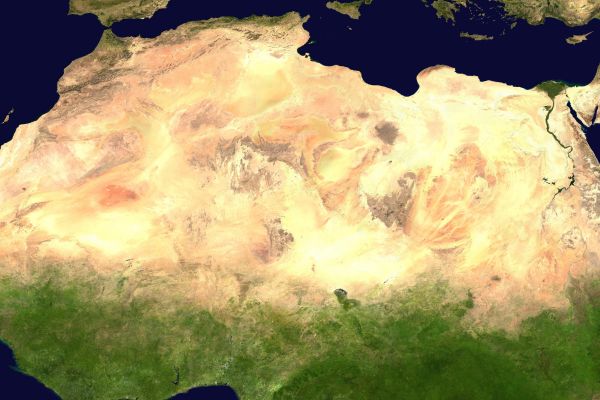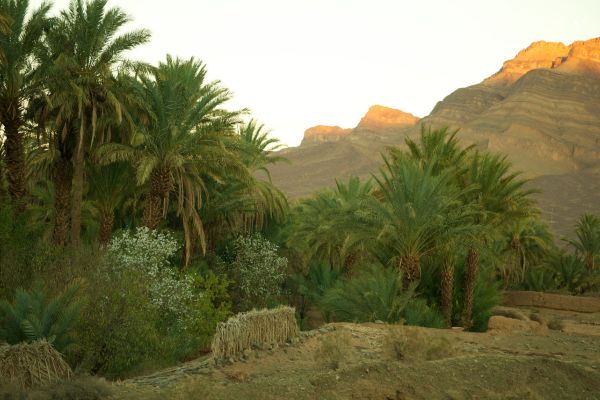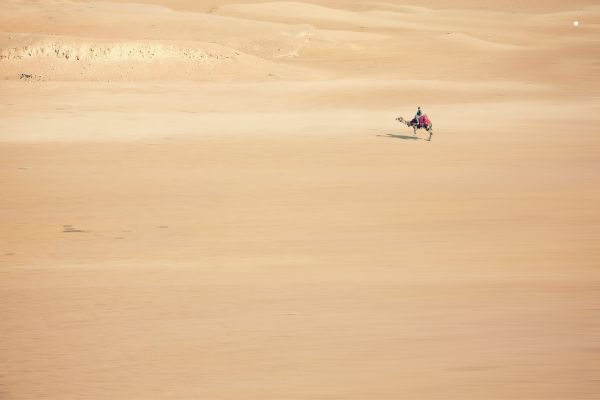Welcome to the Sahara, a place where the sands sing, and the stars tell stories. As your guide through this mesmerizing desert landscape, I’ve seen firsthand the beauty and resilience of the Sahara Desert ecosystem. Today, I invite you on a virtual tour that explores the wonders and complexities of this vast desert. So, grab your virtual water bottle, and let’s embark on an adventure across the sands.

The Heartbeat of the Sahara: A Symphony of Survival
When you first lay eyes on the Sahara, what strikes you is its vastness. A seemingly infinite sea of sand stretches to the horizon, beneath a dome of piercing blue sky. It’s easy to think of this place as barren, a wilderness where silence reigns supreme. Yet, this perception couldn’t be further from the truth. The Sahara is alive, pulsating with a rhythm all its own, a heartbeat felt through the soles of your feet and the whisper of the wind. This desert is a living ecosystem, a testament to nature’s resilience, where life not only exists but thrives under conditions that would seem insurmountable.
A Landscape Alive with Secrets
Beneath the scorching sun and amidst the shifting sands, the Sahara Desert ecosystem reveals its secrets to those who know where to look. It’s a realm where plants and animals have undergone remarkable adaptations to navigate the challenges of desert life. The dunes and arid plains are home to species that have turned survival in extreme conditions into an art form. Here, water is more precious than gold, and the inhabitants of the Sahara have developed ingenious ways to find and conserve it.
Masters of Adaptation: Flora and Fauna
The flora of the Sahara, though sparse, is fiercely resilient. Plants like the Sahara date palm have deep root systems that tap into hidden water reserves deep underground, while their leaves are designed to minimize water loss, a crucial adaptation in an environment where every drop counts. Similarly, the tufts of grass and shrubs that dot the landscape have lifecycles that are timed perfectly with the rare rains, bursting into life and completing their reproductive cycles in the brief window of abundance.
The fauna of the Sahara is equally adept at navigating the desert’s challenges. The fennec fox, with its oversized ears, not only hears its prey from miles away but also uses its ears as radiators to dissipate heat. The addax antelope, with its flat, wide hooves, roams the soft sands, grazing on sparse vegetation, and can go months without water, deriving moisture from the plants it eats. Then there’s the majestic dromedary camel, often dubbed the «ship of the desert,» capable of carrying loads across vast distances without water for days on end.

A Delicate Balance: Ecosystem Interactions
In this extreme environment, every element of the ecosystem is interconnected, relying on delicate balances that have developed over millennia. The sporadic rains, though rare, are the lifeblood of the Sahara, triggering a bloom of life that sustains the desert’s inhabitants. Predators and prey engage in an eternal dance, each playing their role in the desert’s ecological balance. Even the shifting dunes, which might seem inhospitable, provide shelter and habitats for various species, from insects to reptiles.
The Human Element: A History of Harmony
Humans, too, are an integral part of the Sahara’s ecosystem. For thousands of years, nomadic tribes have traversed these landscapes, adapting their lifestyles to the rhythms of the desert. The Berbers, Tuareg, and Bedouins, among others, have developed an intimate understanding of this environment, living in harmony with the land. Their traditional knowledge of water sources, navigation, and the desert’s flora and fauna is invaluable, representing a deep, symbiotic relationship with the Sahara.
The Sahara’s Message
The heartbeat of the Sahara is a reminder of the resilience of life in the face of adversity. It challenges our perceptions of what is habitable, teaching us about adaptation, survival, and the beauty of existence in even the most extreme conditions. The desert’s ecosystem, with its incredible diversity and adaptability, is a powerful testament to the ingenuity of nature.
As we continue to explore and understand the Sahara, let us draw inspiration from its resilience and adaptability. The desert teaches us valuable lessons about living in harmony with our environment and the importance of respecting and preserving natural ecosystems. The heartbeat of the Sahara is a call to all of us, urging us to appreciate and protect the delicate balance of life on our planet.
Life Among the Dunes
In this sea of sand, life flourishes in the most unexpected places. The Sahara is home to a variety of animals that have adapted to the extreme conditions. From the majestic Sahara Desert fox, with its oversized ears that dissipate heat, to the resilient dromedary camels, the quintessential symbol of the desert, known for their ability to travel long distances without water. These creatures have evolved not just to survive, but to thrive here.
Plants, too, have made remarkable adaptations. The few that dot the landscape, such as the Sahara date palm, have deep root systems to tap into underground water sources, and leaves designed to minimize water loss. This delicate balance of life amidst adversity is what makes the Sahara Desert ecosystem so fascinating.
The Sands of Time: Geological Wonders
The Sahara is not just a biological marvel; it’s a geological treasure trove. The desert landscape is constantly reshaped by the winds, creating an ever-changing mosaic of dunes, plateaus, and mountains. Among these natural sculptures, one can find traces of ancient rivers and lakes, evidence that the Sahara was not always the arid expanse we see today. These geological features not only add to the desert’s beauty but also provide crucial habitats for its diverse inhabitants.
A Closer Look at the Sahara Desert Ecosystem
Understanding the Sahara means delving into the complex relationships between its climate, wildlife, and human inhabitants. The desert’s ecosystem is finely tuned, with each element playing a vital role in sustaining life.
Climate: The Rhythms of Rain and Sun
The Sahara’s climate is characterized by its extreme conditions: scorching days, chilly nights, and minimal rainfall. Yet, this harsh climate is precisely what has shaped the desert’s unique ecosystem. The rare rains that bless the desert bring forth a burst of life, transforming the landscape with a fleeting bloom of flowers and grasses. These moments of abundance are critical for the survival of many species, providing a necessary respite in an unforgiving environment.
Human Connections: A Legacy of Adaptation
Humans have inhabited the Sahara for millennia, drawn by its stark beauty and the promise of its hidden resources. The nomadic tribes of the Sahara, such as the Tuareg, have developed a deep understanding of the desert’s ecosystem. Their traditional knowledge of water sources, plant life, and animal behavior is a testament to human resilience and ingenuity in the face of adversity. Today, this connection remains strong, with the desert’s inhabitants continuing to adapt to the changing landscape and climate.

Preserving the Sahara: Challenges and Solutions
As with many of the world’s unique ecosystems, the Sahara faces threats from climate change, overexploitation, and habitat destruction. The delicate balance of the desert’s ecosystem is at risk, posing challenges not only for its wildlife but for the human communities that depend on it.
Climate Change: Shifting Sands and Shifting Climates
The effects of climate change are particularly pronounced in the Sahara, where shifts in temperature and rainfall patterns can have dramatic impacts on the ecosystem. Droughts become more severe, endangering plant and animal life, while altering the landscape itself. Addressing these challenges requires a global effort to reduce greenhouse gas emissions and local initiatives to manage resources sustainably.
Conservation Efforts: Protecting the Desert’s Legacy
Conservation in the Sahara is a multifaceted endeavor, involving the protection of endangered species, the preservation of natural habitats, and the promotion of sustainable practices among local communities. Projects aimed at restoring vegetation, conserving water, and protecting wildlife are crucial for the desert’s future. Through collaboration between governments, NGOs, and local communities, there is hope for the Sahara’s preservation.
Embracing the Sahara: A Call to Adventure
The Sahara Desert is more than just a place of beauty and mystery; it’s a living ecosystem that demands our respect and protection. As we continue to explore and understand this unique environment, we are reminded of the resilience of life and the importance of conservation.
Whether you’re an armchair traveler or planning your next adventure, the Sahara invites you to discover its secrets. From the rhythm of the dunes to the whisper of the wind, the Sahara Desert ecosystem is a testament to the enduring power of nature. Let us cherish and protect this remarkable wilderness for generations to come.
Thank you for joining me on this journey through the Sahara. The desert may be vast and unforgiving, but it is also a place of profound beauty and resilience. As we stand on the brink of change, let us take inspiration from the Sahara and work together to protect our planet’s precious ecosystems. The sands of time continue to shift, but our commitment to conservation can leave a lasting legacy.
If you truly want to experience the Sahara, embark on one of our tours. Discover them on our website.
